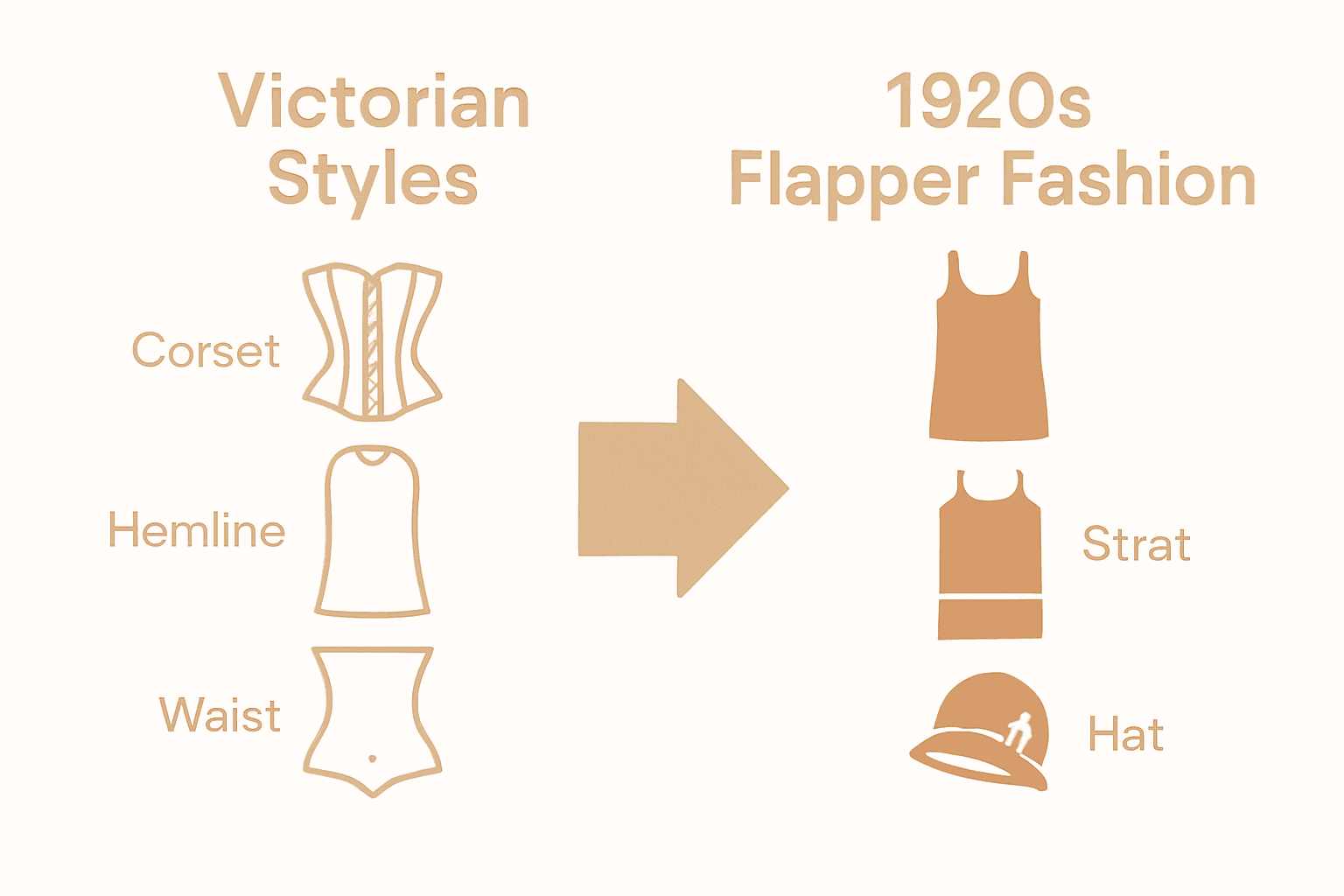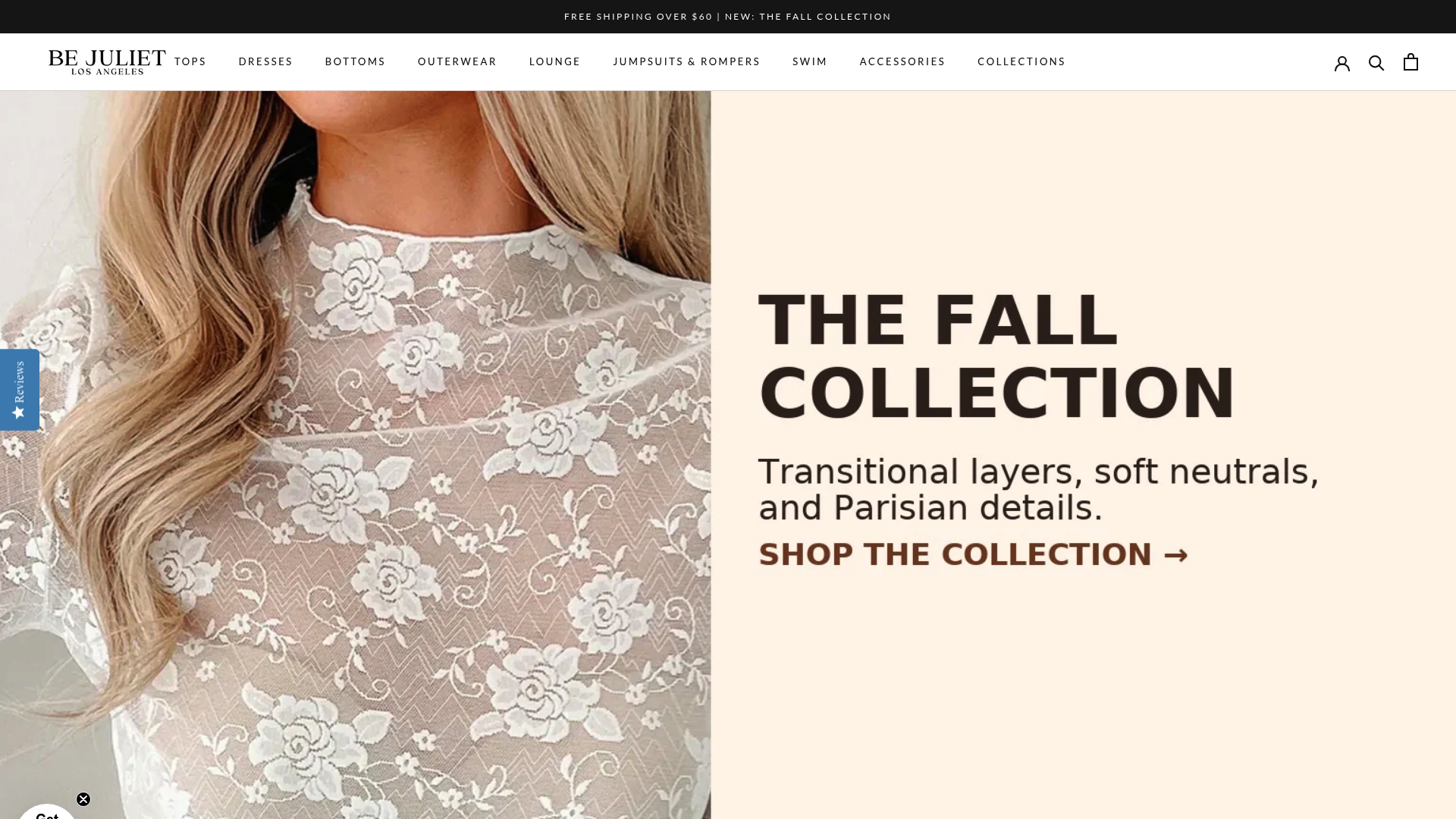Complete Guide to Women’s 1920s Fashion Revolution
Flappers didn’t just change how women dressed. They changed how the world saw women. In the 1920s, almost every rule of women’s fashion was broken, from dropping corsets to raising hemlines above the ankle. Clothing shifted from stiff and restrictive to lively, bold, and expressive, reflecting a wave of independence and new social freedoms. This guide reveals how the fashion revolution of the 1920s helped women claim their power and set the stage for modern style.
Table of Contents
- Defining Women’s 1920s Fashion Revolution
- Iconic Flapper Style and Key Elements
- Freedom and Expression Through Fashion
- Classic Accessories: Pearls, Hats, and More
- Modern Twists on 1920s Vintage Looks
Key Takeaways
| Point | Details |
|---|---|
| Fashion Revolution | The 1920s marked a significant shift in women’s fashion, moving from restrictive Victorian styles to liberating designs that embodied personal freedom and social change. |
| Flapper Style | Flapper fashion represented a cultural transformation, characterized by short dresses and accessories that symbolized women’s independence and rebellion against traditional gender roles. |
| Expression Through Fashion | Women’s clothing during this era served not only as self-expression but also as a form of political protest against societal constraints and conventional femininity. |
| Modern Influence | The legacy of the 1920s fashion continues to inspire contemporary styles, blending vintage elements with modern design to celebrate freedom and individuality. |
Defining Women’s 1920s Fashion Revolution
The 1920s marked a profound fashion revolution that transformed women’s clothing from restrictive Victorian styles to liberating, expressive designs. According to Rollins Scholarship, Julia Wolffe’s research reveals how the flapper style became more than just a fashion statement - it was a powerful catalyst for social change, challenging traditional gender norms and reflecting evolving societal attitudes.
This era represented a radical departure from previous fashion constraints. As documented by the DAR Museum, women’s clothing between 1890 and 1925 dramatically reflected the seismic shifts in women’s societal roles during the Progressive Era. The new silhouettes - shorter hemlines, looser fits, and less structured designs - symbolized women’s emerging independence and desire for physical and social mobility.
Key characteristics of this fashion revolution included:

- Elimination of corsets and restrictive undergarments
- Introduction of shorter skirts (showing ankles)
- Straight, dropped waistlines that created a boyish figure
- Lightweight, moveable fabrics that allowed greater freedom
- Accessories that signaled personal style and rebellion
The 1920s fashion revolution wasn’t just about clothing - it was a statement of personal liberation. Women were literally and metaphorically breaking free from the constrictive clothing that had defined previous generations.
 Be Juliet has explored these transformative fashion trends in our deep dive into understanding women’s style evolution, showcasing how fashion can be a powerful form of self-expression and social commentary.
Be Juliet has explored these transformative fashion trends in our deep dive into understanding women’s style evolution, showcasing how fashion can be a powerful form of self-expression and social commentary.
Iconic Flapper Style and Key Elements
Flapper fashion emerged as a bold, revolutionary statement of feminine independence and modern identity. According to Kiyornd Lab, this style was far more than just clothing - it represented a cultural transformation that symbolized freedom, rebellion, and a radical reimagining of women’s social roles.
Wikipedia highlights the distinctive characteristics that defined the flapper aesthetic, which was characterized by its dramatic departure from previous fashion norms. The iconic style featured short, straight dresses with dropped waistlines, creating a boyish silhouette that challenged traditional feminine ideals. Hemlines dramatically rose to show ankles, a scandalous innovation at the time, while accessories became statements of personal rebellion.
Key elements of the flapper style included:
- Straight, loose-fitting dresses that eliminated restrictive corsets
- Beaded and fringed fabrics that allowed dynamic movement
- Cloche hats that hugged the head
- Bold, short bobbed hairstyles
- Dramatic makeup with dark eye makeup and bold lipstick
- Long pearl necklaces and statement jewelry
- T-strap shoes and low heels that enabled dancing
To truly understand how these fashion choices revolutionized women’s self-expression, Be Juliet’s guide on the design history of women’s clothing provides deeper insights into how clothing transforms social narratives.
The flapper style wasn’t just about looking different - it was about feeling empowered, breaking free from societal constraints, and declaring a new era of female autonomy through fashion.
Freedom and Expression Through Fashion
The 1920s represented a watershed moment of sartorial liberation for women, where clothing became a powerful medium of personal and political expression. According to JETIR Research, women’s fashion during this era was far more than aesthetic innovation - it was a tangible manifestation of societal transformation, symbolizing women’s emerging independence and challenging long-standing social constraints.
Wikipedia’s exploration of the Roaring Twenties reveals how women’s fashion mirrored the broader social revolution of the time. The emergence of the ‘New Woman’ was dramatically illustrated through clothing choices that rejected previous restrictive norms. Shorter hemlines, looser silhouettes, and more practical designs weren’t just trends - they were declarations of personal autonomy and resistance against traditional gender expectations.
Key ways fashion expressed women’s newfound freedom included:
- Rejecting corsets as symbols of physical and social constraint
- Adopting clothing that allowed physical movement and independence
- Using fashion as a form of visual and political protest
- Challenging conventional notions of femininity and modesty
- Creating personal style as an act of self-determination
To dive deeper into how clothing becomes a transformative tool, Be Juliet’s guide on understanding empowerment through fashion offers remarkable insights. The 1920s fashion revolution wasn’t just about looking different - it was about feeling unbound, rewriting societal scripts, and declaring that women’s identities could not be confined by fabric, tradition, or expectation.
Classic Accessories: Pearls, Hats, and More
The 1920s accessory revolution transformed more than just clothing - it redefined how women expressed personal style and rebellion. According to Kiyornd Lab, accessories became powerful symbols of self-expression, with each carefully chosen piece telling a story of newfound freedom and individual identity.
Wikipedia’s Flapper entry reveals the iconic accessories that defined the era, each serving as a statement of social transformation. The cloche hat, with its close-fitting silhouette, dramatically framed women’s bobbed hairstyles, while long pearl necklaces - often worn in multiple layers - challenged previous notions of restrained femininity. Feathered headbands, delicate brooches, and art deco-inspired jewelry completed the look, each piece a rebellion against traditional ornamental fashion.
The most iconic 1920s accessories included:
- Long strands of pearls worn in multiple loops
- Cloche hats that hugged the head
- Beaded headbands with intricate geometric designs
- Art deco-inspired brooches and pins
- Delicate, long gloves
- Statement T-strap shoes
- Decorative cigarette holders
- Ornate compact cases and small handbags
To explore how modern fashion continues to draw inspiration from these revolutionary styles, Be Juliet’s guide on accessorizing outfits offers contemporary insights. The 1920s taught us that accessories are never just decorations - they’re declarations of personality, freedom, and the unbreakable spirit of women who refuse to be confined by traditional expectations.
Modern Twists on 1920s Vintage Looks
The 1920s fashion legacy continues to inspire contemporary style, proving that true innovation is timeless. The Grace Museum highlights how flapper aesthetics have seamlessly transitioned into modern fashion, demonstrating the enduring power of revolutionary design.
Wikipedia’s exploration of Power Dressing reveals how iconic 1920s elements have been brilliantly reinterpreted in contemporary wardrobes. The era’s signature dropped waists, loose silhouettes, and bold accessories have evolved into modern statement pieces that celebrate both vintage charm and current trends. Today’s designers continue to draw inspiration from the decade’s revolutionary spirit, translating its essence into clothing that feels both nostalgic and cutting-edge.
Modern interpretations of 1920s style include:
- Slip dresses with Art Deco-inspired beading
- Wide-leg palazzo pants echoing flapper silhouettes
- Cloche-inspired structured hats
- Sequined pieces that capture vintage glamour
- Drop-waist designs in contemporary fabrics
- Pearl accessories reimagined with modern twists
- Geometric jewelry reminiscent of Art Deco patterns
- Fringed details on modern evening wear
To truly master the art of blending vintage and contemporary styles, Be Juliet’s guide to mixing vintage and modern looks offers expert insights. The 1920s taught us that fashion is more than clothing - it’s a powerful form of self-expression that transcends time, inviting us to honor history while creating something entirely new.
Embrace the Spirit of the 1920s Fashion Revolution Today
The 1920s fashion revolution was all about freedom, bold self-expression, and breaking away from old constraints. If you are inspired by this era’s liberation—from dropped waistlines to statement accessories—and want to feel empowered in your own skin, Be Juliet is here to help you capture that fearless spirit. Our collections blend timeless elegance with modern comfort so you can create your own style that speaks volumes.

Explore our Blouses that echo the loose, flowing silhouettes of the 1920s alongside our latest arrivals in New In for fresh takes on vintage style. Each piece at Be Juliet is designed to resonate with your authentic self-expression and transform your wardrobe into a bold statement of who you are. Start your journey of sartorial liberation now and redefine how you experience love and fashion.
Frequently Asked Questions
What are the key characteristics of women’s fashion in the 1920s?
The 1920s fashion featured shorter hemlines, looser fits, dropped waistlines, and the elimination of corsets. Lightweight fabrics and dynamic silhouettes symbolized women’s emerging independence and desire for mobility.
What is the significance of the flapper style in 1920s fashion?
The flapper style represented a bold statement of feminine independence, characterized by short dresses, bobbed hairstyles, and accessories that signaled personal rebellion. It was not just a fashion trend but a cultural transformation that challenged traditional gender roles.
How did accessories play a role in 1920s women’s fashion?
Accessories in the 1920s, such as cloche hats, long pearl necklaces, and beaded headbands, became powerful symbols of self-expression. They complemented the fashion revolution by allowing women to showcase their individuality and break away from traditional constraints.
How has 1920s fashion influenced modern trends?
Modern fashion continues to draw inspiration from 1920s style through elements like slip dresses, wide-leg pants, and Art Deco-inspired accessories. This era’s signature designs have been reinterpreted to blend vintage charm with contemporary aesthetics.
